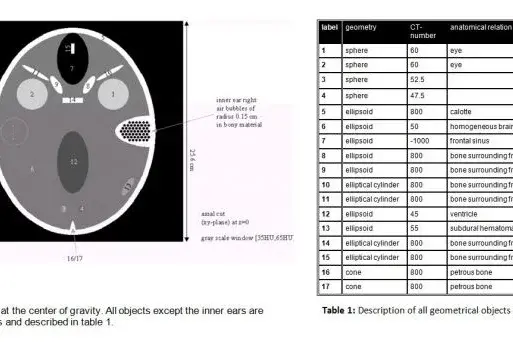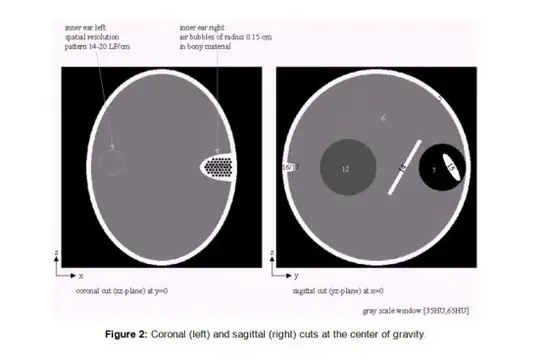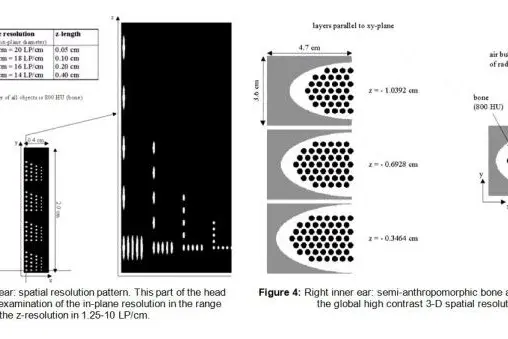Head Phantom
Günter Lauritsch, Herbert Bruder
The aim of this phantom is to provide semi–antropomorphic cone–beam rawdata for CT examinations of the head, e.g. cancer diagnosis of the brain (low contrast) or imaging of the inner ear (high spatial resolution).
Phantom Description
The head phantom is a 3-D extension of the well-known 2-D head phantom which is used for evaluation of image quality since a long time. The 2-D geometry of the former phantom was reformulated to a 3-D geometry. Due to its similarity to the former 2-D phantom image results of 3-D cone beam CT may easily be compared with quality standards of 2-D imaging. The phantom was completed by objects representing the inner ear.
The phantom is defined by simple geometric objects like spheres, cylinders, ellipsoids or cones. The phantom consists of a simple representation of anatomical structures which are important in evaluating CT image quality: calotte, frontal sinus and surrounding bones, petrous bone, inner ears, eyes, homogeneous brain matter with low contrast objects like ventricle, subdoral hematoma or tumors.

An axial cut of the head phantom at the center of gravity is shown in figure 1, coronal and sagittal cuts in figure 2. All objects except the inner ears are labeled by numbers and described in table 1. For simplicity the phantom is currently designed for simulations of monochromatic X-rays. Therefore there is no need to consider the specific characterisitcs of the particular anatomic materials, and the absorption properties of the phantom objects are completely described by its CT-numbers.

The inner ears positioned at the left and right side respectively differ from each other: on the left side ellipsoidal objects form a spatial resolution pattern for examinations of in-plane as well as z-resolution (see figure 3), while on the right side the inner ear is modeled by a regular structure of air bubbles surrounded by bone as an indicator of the global high contrast 3-D spatial resolution (see figure 4).
In a plane parallel to the xy-plane the spatial resolution pattern (figure 3) consists of a 4x4 matrix of groups of five ellipsoids each. Ellipsoids are equal sized in each groups. Groups in y-direction differ by its z-length, groups in x-direction by its in-plane diameter. The first member of each group is repeated in the z-direction forming also a group of five ellipsoids to study z-resolution. The pattern is designed to show in-plane resolution of 14-20 LP/cm, the z-length varies 0.40cm to 0.05cm.
The structure of figure 4 models the bone surrounding the inner ear. It consists of a regular, dense package of air bubbles in bony material. The package is built by seven layers parallel to the xy-plane. Subsequent layers are shifted by half of the spacing in x-direction. The uniform size of the air bubbles (diameter 0.3 cm) is adapted to realistic anatomy.
